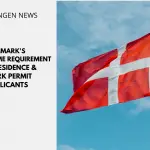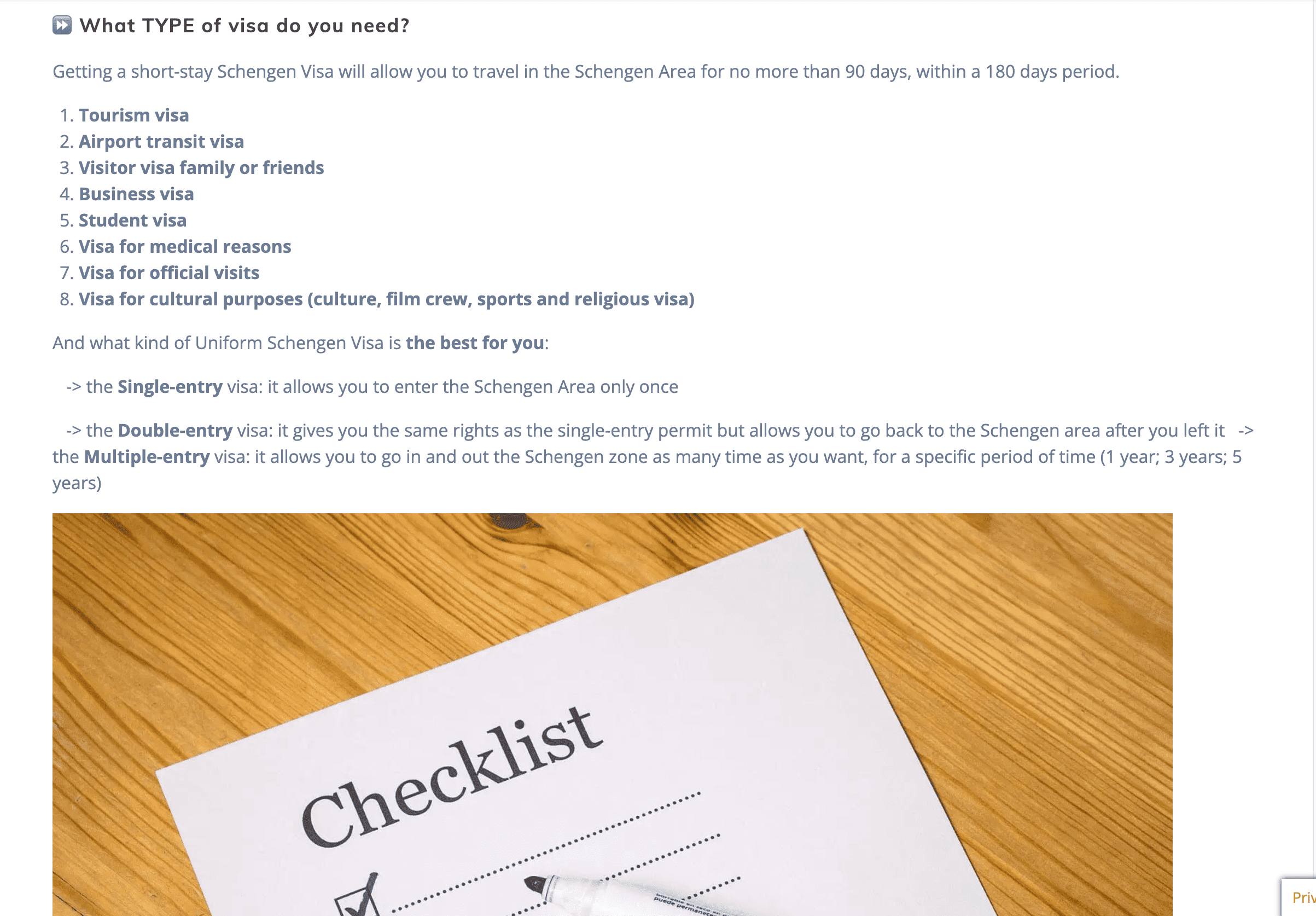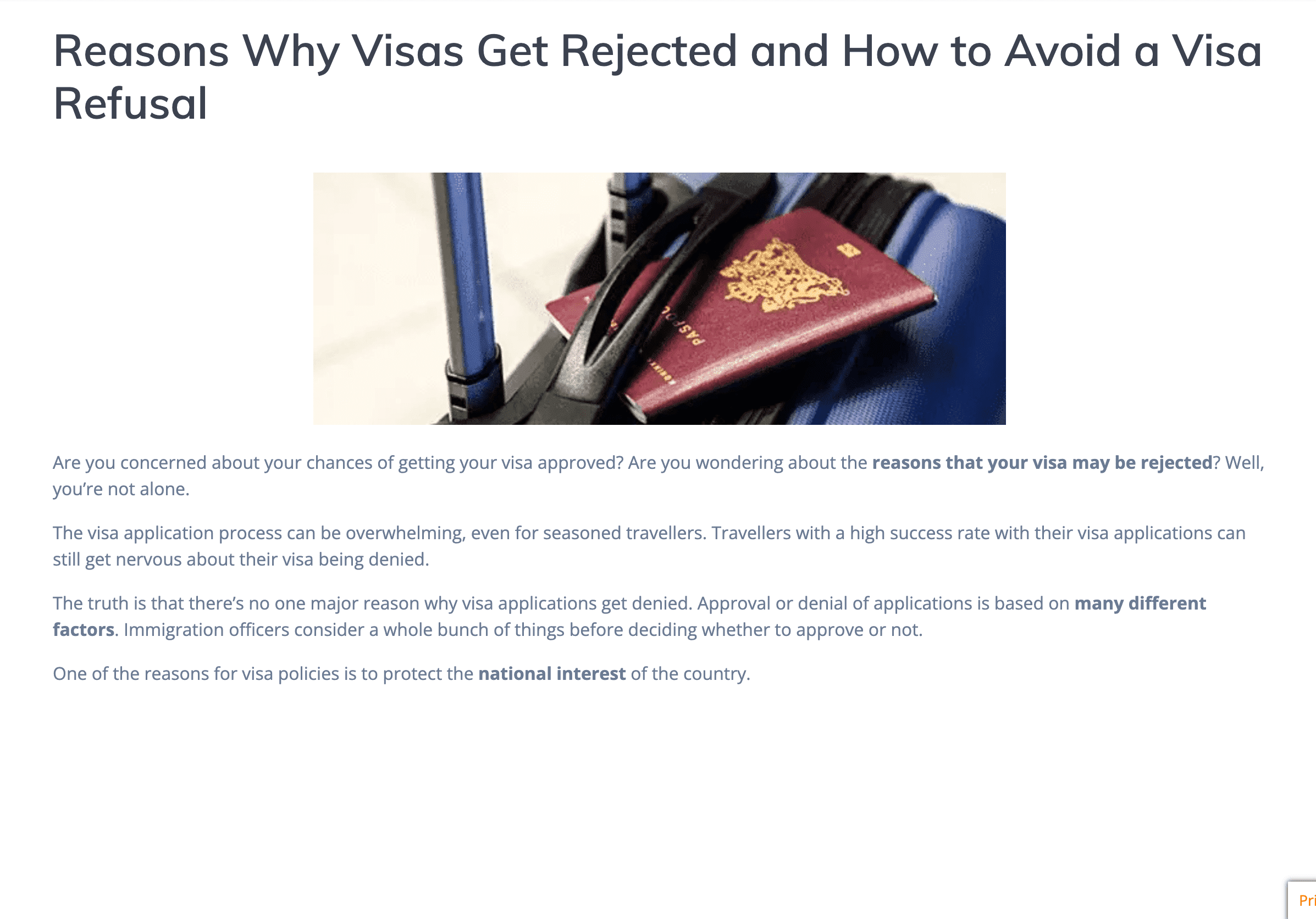How to Apply for a Denmark Schengen Visa for UK Residents
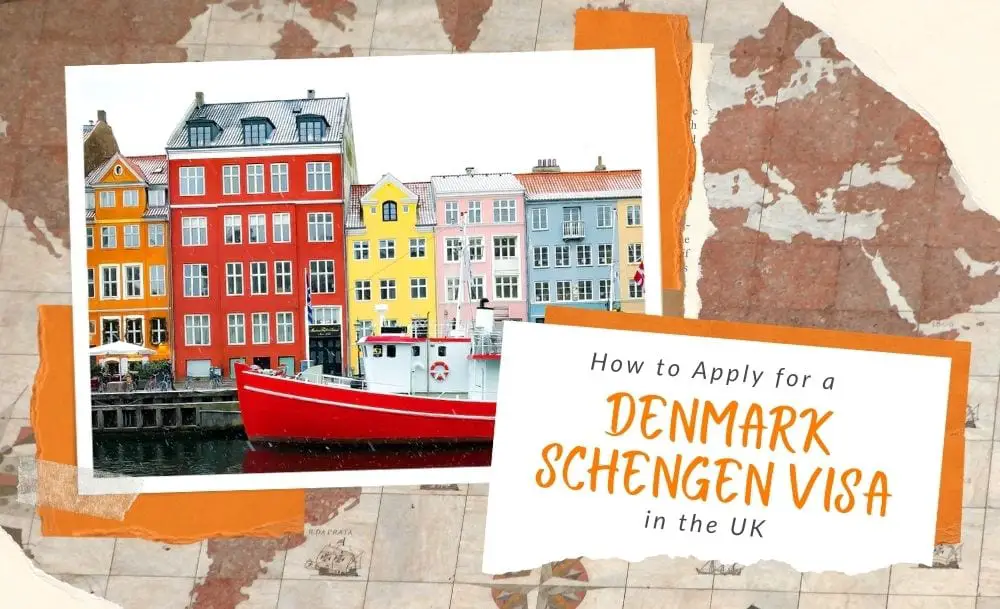 [su_spoiler title=”Contents In this Article” icon=”plus-circle”]
[su_spoiler title=”Contents In this Article” icon=”plus-circle”]
- Denmark Entry Restrictions in Response to Coronavirus
- Denmark Regular Entry Requirements
- Who needs a visa to travel to Denmark from the UK?
- Travelling to Denmark Post-Brexit
- Should you apply for a Schengen visa at a Danish embassy?
- Types of Schengen Visas Offered at the Embassy of Denmark in London
- Steps to Applying for a Denmark Schengen Visa from the UK
- What are common Denmark Schengen visa rejection reasons?
- Denmark Schengen Visa Extension
- Contact details for the Embassy of Denmark in London
- Frequently Asked Questions About Denmark Visas
It is very difficult to say if it was William Shakespeare, the Vikings, or Hans Christian Andersen who made the European country of Denmark famous and a must-visit place for tourists.
Apart from those factors Denmark one of the Scandinavian countries of Europe is home to some of the most stunning natural sights on earth, such as floating sand dunes that change location every year and majestic cliffs that bring with them 65 million years’ worth of history. As if that wasn’t enough, you can explore some of the islands off the main coast of the country, where you will find vast pine forests, wild horses, and relaxing seals.
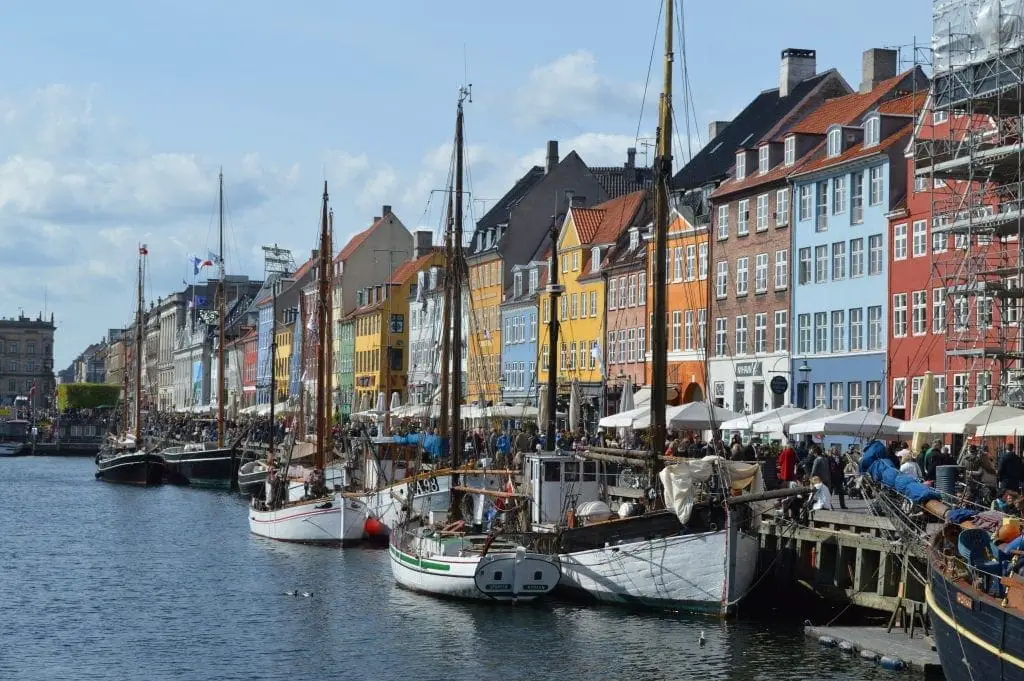
Depending on your interests, you can take a trip back in time to learn all about the Viking roots of the smallest country in the Nordic region, or fast forward into the future at some of the most cutting-edge museums in the world such as the Maritime Museum or the AroS Art Museum.
Denmark Entry Restrictions in Response to Coronavirus

In early 2020, Denmark joined its Schengen country neighbours in closing its borders due to the COVID-19 pandemic. The country has since re-opened its borders to allow travel, but with restrictions that depend on your country of origin.
Denmark has adopted their own national classification of coronavirus risk areas. The country’s travel restrictions are not based on the “EU Traffic Lights” scheme.
Under Danish travel restrictions, countries and regions are classified into 3 categories: “yellow”, “orange” and “red”. These classifications are updated on a weekly basis according to their epidemiological situation so it is best to check often if you wish to travel to Denmark to know which classification the UK belongs to and what restrictions apply.
Currently, travellers from “yellow” countries do not need to demonstrate a “worthy purpose” to travel to Denmark and are not subject to the quarantine requirement.
Foreign residents abroad and travelling from “orange” or “red” countries, however, must demonstrate a “worthy purpose” to enter the country and are also required to complete a 10-day mandatory quarantine, even if they are able to provide a negative COVID test result before entry, upon arrival and after entry into Denmark. This applies regardless of what type of test result is presented (i.e. rapid or antigen test or a PCR test), and regardless of whether you are a Danish or foreign citizen.
There may also be different or additional entry requirements or restrictions for the Faroe Islands and Greenland, so make sure to check what the current requirements and restrictions are if you are planning a trip to either of these territories.
Remember, these procedures and guidelines may update at any time, so you should check on the latest news regarding restrictions, quarantine requirements, or whether a test will be required, either from reliable news sources, the Danish government website, or the UK government website one to two weeks before your trip.
Denmark Regular Entry Requirements
If you’re travelling using the land border, or by rail, road, or ferry you should make sure you have your passport with you. Allow additional time, be vigilant and follow the instructions of local authorities. Check with local media, your carrier, ferry operator or Danish State Railways (DSB) for more information.
When crossing from Denmark to Sweden various forms of ID are accepted, but must include a photograph, the holder’s full name, social security number or date of birth, holders signature, a stated validity and information on the issuing authority. Children under 18 accompanied by an adult with the appropriate ID are not required to carry ID themselves.
Who needs a visa to travel to Denmark from the UK?
Travelling to Denmark for EU/EEA Citizens
Denmark is a Schengen country, which allows for free movement between the 26 EU and EFTA states (Iceland, Norway, Liechtenstein, and Switzerland). A uniform Schengen visa issued by one of the Schengen states is valid for travel within the whole Schengen area.
Travelling to Denmark Post-Brexit for UK Citizens
The rules for travelling or working in European countries changed on 1 January 2021:
- you can travel to countries in the Schengen area for up to 90 days in any 180-day period without a visa as a tourist, to visit family or friends, to attend business meetings, cultural or sports events, or for short-term studies or training
- if you are travelling to Denmark and other Schengen countries without a visa, make sure your whole visit is within the 90-day limit. Visits to Schengen countries within the previous 180 days before you travel count towards your 90 days
- for long-stay visits, to work or study, for business or for other reasons, you will need to meet the Danish government’s entry requirements.
- if you stay in Denmark with a residence permit or long-stay visa, this does not count towards your 90-day visa-free limit
At Danish border control, you may need to use separate lanes from EU, EEA and Swiss citizens when queueing. Your passport may be stamped on entry and exit. You may also need to:
- show a return or onward ticket
- show you have enough money for your stay
There are separate requirements for those who are residents of Denmark. If you are resident in Denmark, you should carry proof of residence as well as your valid passport when you travel. You should also check your passport’s validity when you travel and renew it if you don’t have enough time on it. Your passport must be:
- valid for at least 3 months after the day you plan to leave Denmark or any other Schengen country
- less than 10 years old
Travelling to Denmark Post Brexit for Other Third Country Citizens
Citizens of the following countries residing in the UK and planning to visit Denmark are required to get a Danish visa in order to be able to enter Denmark.
[su_tabs][su_tab title=”A-C”][su_table]| Afghanistan | Algeria | Angola |
| Armenia | Azerbaijan | Bahrain |
| Bangladesh | Belarus | Belize |
| Benin | Bhutan | Bolivia |
| Botswana | Burkina Faso | Burma/Myanmar |
| Burundi | Cambodia | Cameroon |
| Cape Verde | Central African Republic | Chad |
| China | Comoros | Congo |
| Cote D'iviore | Cuba |
| Dem. Rep. Of Congo | Djibouti | Dominican Republic |
| Ecuador | Egypt | Equatorial Guinea |
| Eritrea | Ethiopia | Fiji |
| Gabon | Gambia | Ghana |
| Guinea | Guinea-Bissau | Guyana |
| Haiti | India | Indonesia |
| Iran | Iraq |
| Jamaica | Jordan | Kazakhstan |
| Kenya | Kosova | Kuwait |
| Kyrgyzstan | Laos | Lebanon |
| Lesotho | Liberia | Libya |
| Madagascar | Malawi | Maldives |
| Mali | Mauritania | Mongolia |
| Morocco | Mozambique | Namibia |
| Nepal | Niger | Nigeria |
| North Korea | Northern Mariana's | Oman |
| Pakistan | Papua New Guinea | Philippines |
| Qatar | Russia | Rwanda |
| Sao Tome And Principe | Saudi Arabia | Senegal |
| Sierra Leone | Somalia | South Africa |
| Sri Lanka | Sudan | Suriname |
| Swaziland | Syria | Tajikistan |
| Tanzania | Thailand | Timor-Leste |
| Togo | Tonga | Tunisia |
| Turkey | Turkmenistan | Uganda |
| Uzbekistan |
| Vietnam | Yemen | Zambia |
| Zimbabwe |
The main requirement is that you must have a UK residence permit valid for at least another three more months beyond the date you plan to leave Denmark/the Schengen Area.
Before starting a visa application, or getting a flight to Denmark, make sure to check whether you need a visa to Denmark or not.
If you have a 3-month UK visa you can extend it for three more months in order to be eligible to apply for a Danish Schengen visa from within the UK. You must apply for an extension before your visa expires and while you’re still in the UK.
What are the requirements for an extension of a Leave to Remain?
When you decide to apply for an extension you must make sure you comply with several situations:
- You must require an extension in the same visa type you currently have
- You should apply for an extension at least 8 weeks before the existing visa period exceeds
- You must have not been part of any criminal activity or you must have not broken any UK law or Immigration law during the entire period of stay in the UK
- You have to provide the biometric information – such as the fingerprints and recent photographs for yourself and any dependents when applying for the extension
- You must have not been in breach of immigration laws while having a valid UK visa

Travelling to Denmark Post-Brexit
The rules for travelling or working in Europe have changed starting 1 January 2021 due to Brexit.
- You will be able to travel to countries in the Schengen area for up to 90 days in any 180-day period without a visa for purposes such as tourism. This is a rolling 180-day period.
- If you are travelling to Denmark, previous visits to the Schengen area within the 180 days before your date of travel would count against the 90-day limit.
- If you are travelling visa-free to Denmark to other countries in the Schengen area, make sure your whole visit is within the limit.
- To stay longer, to work or study, or for business travel, you will need to meet the entry requirements set out by Denmark. This could mean applying for a visa or work permit. You should check with the Danish Embassy what type of visa, if any, you will need.
- Periods of stay authorised under a visa or permit will not count against the 90-day limit.
Find out other things that changed during the Brexit transition in our article: Brexit Reminder: Things that will change in 2021.
Should you apply for a Schengen visa at a Danish embassy?
You should apply for a Danish visa at the appropriate Danish embassy/consulate or Danish visa application center in the UK if:
- Denmark is the only Schengen country you plan on visiting
- Denmark is your main destination (the country you will be staying the longest in)
- Denmark is the first Schengen country you are visiting (when spending an equal amount of days in Denmark and another Schengen country)
In case you plan on staying in Denmark for more than 90 days you must apply for a residency permit, not a Danish Schengen visa.
Please, note that if you are not a resident in the United Kingdom you should apply at the Danish Embassy/Consulate/VAC in your home country of residence.
Types of Schengen Visas Offered at the Embassy of Denmark in London
There are 2 types of Schengen visa that you can apply for at the Danish embassy. The type you need will depend on the duration of your trip and your reason for travelling to Denmark:
- Short-stay (Schengen) Visa – valid for up to 90 days (in a 180 day period) for the purposes of tourism, business, visiting family/friends, conference, short-term study, medical treatment, cultural, sports, and film crew, and EEA/EU national family member visa
- Long stay (Residence and work permits) Visa – you should apply for this kind of visa if you want to live in Denmark for more than 90 days for employment, family reunification, study, research, etc.
Steps to Applying for a Denmark Schengen Visa from the UK
Step 1: Know Your Visa Type and Validity
To apply for a Schengen visa to Denmark in the UK, you first need to know the type of visa you require and how long the visa will need to be valid. There are 2 types of visa that you can apply for and the one you need will depend on the duration of your trip and your reason for travelling to Latvia:
- Short-stay (Schengen) Visa – valid for up to 90 days (in a 180-day period) for the purposes of tourism, business, visiting family/friends, conference, EEA/EU national family member
- Residence and work permits (Long stays) – you should apply for this kind of visa if you want to live in Latvia for more than 90 days for employment, family reunification, study, research etc.
You will then be issued either a single entry, double-entry, or multiple-entry visa for up to 5 years based on the information you provide in your visa application.
It is important to choose the correct Schengen visa type to apply for depending on your trip so that you have the best chance of having your application approved. Find out more about the different types of Schengen visas in our blog post: Schengen Visa Types – All You Should Know When Applying for a Schengen Visa.
Step 2: Identify where to make the application and book an appointment
The Embassy of Denmark has appointed VF Services (UK) Ltd. as its outsourced partner for acceptance and processing of its visa applications. All visa applications will be accepted and processed by VF Services (UK) Ltd. through its dedicated Denmark Visa Application Centres in London, Manchester and Edinburgh.
It is necessary to book an appointment for an interview at the VFS centres in London, Manchester and Edinburgh, and you may have to wait several weeks for an available appointment slot for an interview.
The service focuses on delivering visas within a short time (15 days calculated from the date the Embassy receives the application). Please note that for applications handed in in Manchester or Edinburgh this date is usually 3-4 working days after the application date. Applications handed in in London are usually received at the Embassy the next working day.
VFS, the Embassy's outsourcing partner, accepts visa applications for business/conference visits and from family members of EU/EEA nationals at all three centres without an appointment Monday – Friday 8.30 – 12.00. Please note that all applications submitted at the visa centre will incur a mandatory service charge (currently £25.69 – subject to change).
Step 3: Complete your application form

The Schengen Visa application form contains questions about you including:
- Name and surname
- Date and place of birth
- Nationality
- Sex and marital status
- National Identity number
- Passport number
- Home address and email
- Purpose of trip
- Question regarding previous trips to Schengen, if any
- Intended date of arrival in Schengen area you are visiting, and the intended period of stay
- Cost of traveling and remaining in Schengen area you are visiting, who will cover them, etc.
Make sure your answers are correct and that they comply with the information in the rest of the documents. Complete the form, print it twice, and sign both copies at the end.
Find out more about how to complete a Schengen visa application form in this blog post.
Step 4: Prepare your documents
The following list of documents are required in order to obtain a visa to Denmark in the UK:
- A valid passport or Travel document. Please make sure:
- Your passport has been issued within the previous 10 years,
- Your passport has 2 full blank pages, one for the visa stamp and an additional spare page,
- Your passport will be valid for at least three (3) months after the date you exit the Schengen Area.
- A valid UK residence permit or another form of Identity Card.
- The UK residency permit must be endorsed in the actual passport (or on a new biometric ID card)
- The UK residence permit must be valid for at least another three more months beyond the date you plan to leave Denmark.
- One Danish Schengen Visa application form filled out completely and signed by the applicant.
- One recently taken passport format photo with a blank background and where all your facial features are clear, which must be glued to the application form. Applications with stapled photographs will be rejected.
- A cover letter explaining the purpose of the visit to Denmark
- Biometric data (Applies only if you haven’t provided biometric data within the last 59 months):
- Fingerprints – This requirement only applies if you haven’t provided biometric data within the last 59 months.
Note: Children under the age of 12 are exempted from providing fingerprints. - A copy of the passport bio page where the photo is included.
- Proof of travel arrangements:
- Round trip flight/travel reservations or other proof of intended transport
- A complete itinerary of your visit to Denmark (if several Schengen States will be visited or if the trip covers several Schengen States and non-Schengen countries).
- Travel Insurance stating that you are covered in case of a medical emergency and repatriation not just in Denmark but in the whole Schengen zone (minimum coverage of € 30,000).
- Holders of diplomatic passports and family members of EU/EEA citizens are exempted from providing proof of travel medical insurance
- Proof of accommodation in Denmark:
- Evidence of a hotel booking or rental agreement, or
- Invitation from your Danish host (family member, friend) with a copy of their passport
- Proof of financial subsistence: Proof of financial subsistence:
- Original recent Bank Statement (covering the last 3 calendar months. The last transaction must be no more than 1 month old)
- £60.00 per person per day if you are staying in a hotel.
- £40.00 per person per day if you are staying in a hostel or similar.
- £20.00 per person per day if you are staying with family or friends (even when your host has confirmed that he/she will be covering your expenses) plus funds for a return ticket to your country of residence.
- Traveller’s Cheques
Note: Cash is not considered proof of financial subsistence.
- Certificate of criminal record of the home country– showing that candidate has no open crime case involvement
- Proof of paid Denmark visa fee.
Note: Photocopies of the original documents should also be submitted and documents should not be more than one month old.
The documents listed above are documents required in all cases, regardless of the purpose of your visit in Denmark.
Depending on your employment status, here is a list of additional documents that are required for your visa application:
For employees:
- Employment contract
- Current bank statement of the latest 6 months
- Leave permission from the employer
- Income Tax Return (ITR) form or Certificate of Income Tax deducted at the source of salary
For the self-employed:
- A copy of your business license
- Company bank statement of the latest 6 months
- Income Tax Return (ITR)
For foreign students in the UK:
- Proof of enrollment
- No-objection certificate from school or university
For retirees:
- Pension statement of the latest 6 months
If unemployed and married to an EU citizen:
- A recent (less than 3 months old) Confirmation of Employment letter from their spouse’s employer stating the position held within the company as well as the starting date,
- Spouse’s valid passport
- An officially translated marriage certificate. The translation must be in English or Danish and must be certified as a true copy by the Embassy of the country where the marriage took place or by the Legalization Bureau of the Foreign Office in UK.

Requirements for children under the age of 18:
Parents or an adult guardian are required to accompany their underage children at the application centre at the Embassy of Denmark in London. Also, minors who are granted a Danish visa are not allowed to travel to Denmark by themselves. They should be accompanied by an adult during their stay in Denmark.
Required documents for visa application for underage children:
- Birth certificate
- Denmark Schengen Visa application form should be signed by both parents.
- Family court order, in cases where only one parent has full custody over the child.
- Certified copies of ID / passport of both parents
- A notarized parental authorization to travel to Denmark, signed by both parents / guardians, if the minor will be travelling alone with another person.
All documents provided should be legalized and be in the following languages:
- English
- Danish
Step 5: Attend your appointment
On the day of the interview, show up at the appointment centre on time (embassy or consulate). Remember that if you are late even for a few minutes, then they will probably cancel your appointment. Try wearing something a bit more official, but comfortable.
The Denmark visa interview takes around 10 minutes to complete. During this interview, the consular officer will ask you several questions about you and your intended trip. You will also be submitting the required documents throughout the meeting, to the interviewer.
After the verification of your application, the application form information will be entered into the online system of the consulate or embassy and you will receive a printed copy of your application, which process usually takes about 10 to 15 minutes. After you get the printed form, please make sure to verify all the details are correct and sign the form.
Underage applicants must be accompanied by their parent or legal guardian.
Denmark Schengen Visa Fees for UK Residents
The fee must be paid upon submitting the Danish visa application. After you complete this payment, you will receive a receipt, which shows that payment has been made, which must be offered amongst other documents of the application dossier. You will have to pay a Denmark visa fee in order for your application to be processed.
Since Denmark is a Schengen state, visa fees are the same as any other Schengen visa. These are the costs of a Danish Schengen Visa when applying from UK:
| Schengen Visa Category (by age) | Fee in GBP | Fee in Euro |
| Adult | 73 £ | 80 € |
| Child between 6-12 years of age | 36.5 £ | 40 € |
| Child younger than 6 years of age | Free | Free |
Step 6: Receive your visa
Denmark Schengen Visa Application Processing Time in UK
You can apply for a Denmark Schengen visa up to 6 months before your planned trip. Depending on the nationality of the applicant, the processing time may take at least 15 days from the day of application. In some cases when required documents are missing from the application this process may take longer.
To avoid unwanted complications and delays, the Danish Consulate General in London advises that you provide all required documents and submit your application at least 20 workdays (4 weeks) before the day you leave for Denmark.
Once your visa is approved, it will be stamped in your passport. Make sure to carefully check the visa sticker to make sure everything is correct and exactly how you need it.
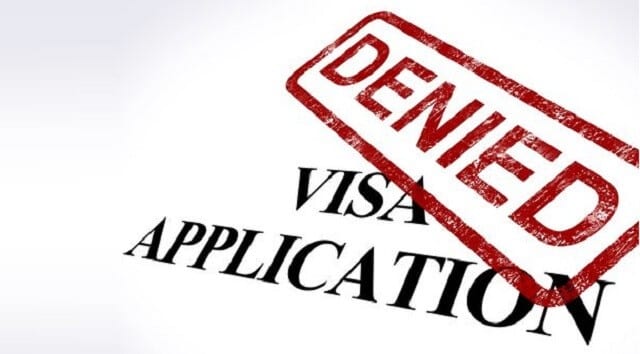
What are common Denmark Schengen visa rejection reasons?
There are several reasons why your Denmark Schengen visa application could be rejected. Some common Schengen visa rejection reasons include:
- Marriage certificate missing – if you are applying for a visa for family reasons, you may have to prove family ties. This is why you must provide a marriage certificate
- You applied for the wrong visa – it is your responsibility to apply for the correct visa depending on how long you are going to Denmark for and your reason for travelling there
- It is not clear that you plan to return to the UK – it must be clear that you intend to return to the UK before the visa expires. If the visa staff have doubts about this, your visa will be rejected
- The purpose of your trip cannot be established – the reason why you are planning to go to Denmark must be made clear. You can do this by providing specific documents like a full itinerary, work contract or invitation letter, etc.
You need to make sure that you submit the required documents and answer your visa interview well in order to get the best chance of having your visa application approved.
Read more on how to avoid visa rejections here: Visa refused: 9 Common Reasons Why Visas Get Rejected.
What if your Denmark Schengen visa is rejected?
If you receive a negative answer in your Denmark Schengen visa application, this does not mean you cannot ever travel to Denmark. In fact, you have two options:
- File an appeal for a Denmark Schengen visa rejection if you believe that the decision to deny you a visa is unjust. You should have a strong basis for your complaint. You can appeal this decision by writing an appeal letter for a Denmark Schengen visa rejection.
- Reapply by correcting the mistakes you did in your previous application. Or improve your situation in order to comply with the eligibility criteria for a Denmark Schengen visa.
Denmark Schengen Visa Extension
A person visiting Denmark on a Schengen Visa is allowed by law to extend their visa if they have legitimate reasons. According to the Schengen visa policy, acceptable reasons to extend a Schengen short-stay visa are:
- Late entry
- Humanitarian reasons
- Force majeure, and
- Important personal reasons
The decisions to approve a Schengen visa extension request are handled case by case.
Denmark Schengen Visa Extension Process
The overall process of extending your Danish Schengen visa will involve:
- Determining whether you have a justified reason to request for an extension
- Submitting all the necessary documents. These include a valid passport that has the Schengen Visa used to get in the Schengen area stamped in it, one passport-sized photo, proof of financial subsistence, Schengen Visa Insurance that covers the extension duration, and all the documents that justify your reason for an extension
- Paying visa fees where applicable
- Attending a visa interview if necessary
- Waiting for the approval
You must apply for a Schengen Visa extension before it expires. It may take a few days to a month for the authorities to process your visa extension request, during which you are legally permitted to stay in the country where you applied for the Schengen Visa but cannot travel to other Schengen Countries.
If your visa extension request is approved, you can extend your stay in the Schengen Area until the visa validity but if your visa extension application is rejected, you will have to leave the Schengen area in a day or two.
You need to make sure to read your Schengen visa sticker carefully so that you do not overstay your visa and avoid the penalties that come with doing so, which can include anything from a fine, deportation from the Schengen zone, and even being outright banned from the area.
Read more about extending your Schengen visa in our blog post: Overstaying in the Schengen Zone? Here’s How to Extend Your Schengen Visa.
Contact Details for the Embassy of Denmark in London
Address: 55 Sloane Street, London, SW1X 9SR
Telephone: 020 7333 0200
Fax: 020 7333 0270
Email: [email protected]
Hours: Monday to Thursday, 9.00 am – 4.30 pm; Fridays, 9.00 am – 4.00 pm

Frequently Asked Questions About Denmark Visas
Can I get my Denmark Schengen visa on the same day that I apply?
Normally, your visa cannot be issued on the same day that you apply. However, in cases of an extreme medical emergency, you are able to obtain a Denmark visa on the same day you apply. You should keep in mind that the Embassy has the final word on this matter.
How can I get a Denmark Schengen visa fast?
You can get a premium Schengen visa to get your Denmark Schengen visa within 24 to 48 hours, which includes personalised advice from an expert immigration adviser.
Do I need to get a Denmark Schengen visa even though I have a BRP?
If you are a national of a third country without a visa-free scheme with the EU, you will need to get a visa to travel to Denmark or any Schengen country. You should also remember to bring your biometric card with you for your return to the UK.
Is a Denmark Schengen visa easy to get?
Yes, it is easy to apply for a Denmark Schengen visa. You can apply for the visa online or use immigration services like IAM to make the process even simpler for you and have a higher chance of your application being accepted.
Can I work in Denmark with a Schengen visa?
No, the Schengen visa is a permit for tourism, business, or visiting family and friends. You will need to apply for a work visa to work in Denmark.
How much bank balance is required for a Denmark Schengen visa?
It depends on how long your trip is and where you will be staying. The Visa Code of Denmark suggests that, if you are staying in hotel, you should have 500 DKK or 67.24€ for every day you spend in Denmark. But if you are staying in a hostel or similar accommodation types, the required amount will be 350 DKK or 47.07€. You can show that you have this amount on your application by presenting bank statements and proof of confirmed hotel bookings and that your income or investments are sufficient to support you during your trip.
What is the best currency to take to Denmark?
Even though Denmark is an EU country, they use their own currency, which is the kroner (written as DKK). Some shops, hotels, and restaurants accept payment in both Danish Kroner and Euros but it will be better for you to bring enough Danish kroner for your trip as you will not be able to rely on all shops to accept Euros. Cashless transactions have also become very popular among the locals, so it will be easy for you to pay with a credit or debit card.
What are considered as “worthy purpose” for travel to Denmark?
The following are what are considered as “worthy purpose” for travel to Denmark:
- primary caregiver of minors;
- relationship with a seriously ill or dying person in Denmark;
- treatment at a healthcare institution;
- participation to the birth of your child;
- attendance of a funeral;
- participation in legal proceedings;
- you are a seaman, an aircraft crew member, a diplomat, etc.;
- you enter Denmark in connection with the transport of goods.
IaM can help with your visa application to the United States, the UK & other countries
Are you ready to make your application to Denmark? Is there anything we missed in our blog post or anything you need clarification on? Comment below.
If you need help with a US visa, a UK Visa, or visa to Europe, including help with appointment booking obligations, IaM can help. For more information and advice on US immigration, UK immigration law and US visa applications or if you need any help or assistance please, reach out to your Visa Coordinator at IaM.
- How to Apply for a Luxembourg Schengen Visa from the UK - 14 March 2025
- How to Apply for a Liechtenstein Schengen Visa from the UK - 13 March 2025
- Austria Schengen Visa Requirements for UK Residents - 11 March 2025



